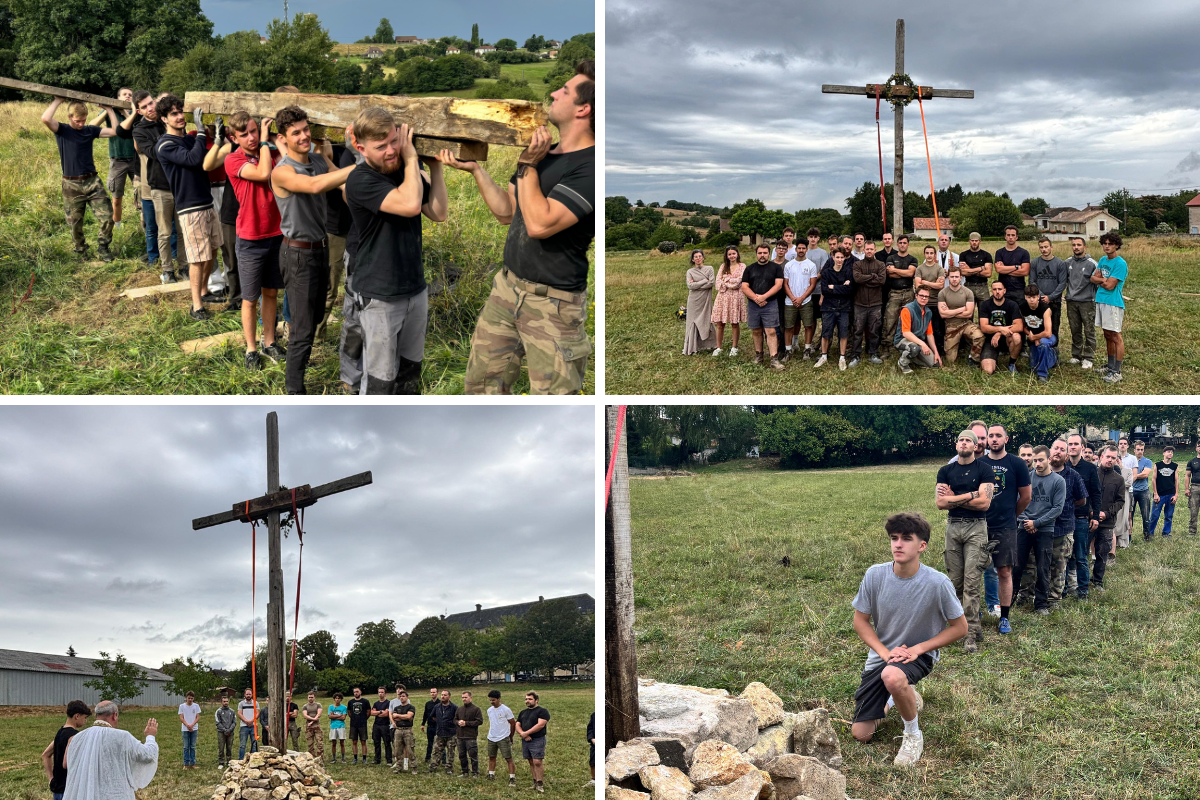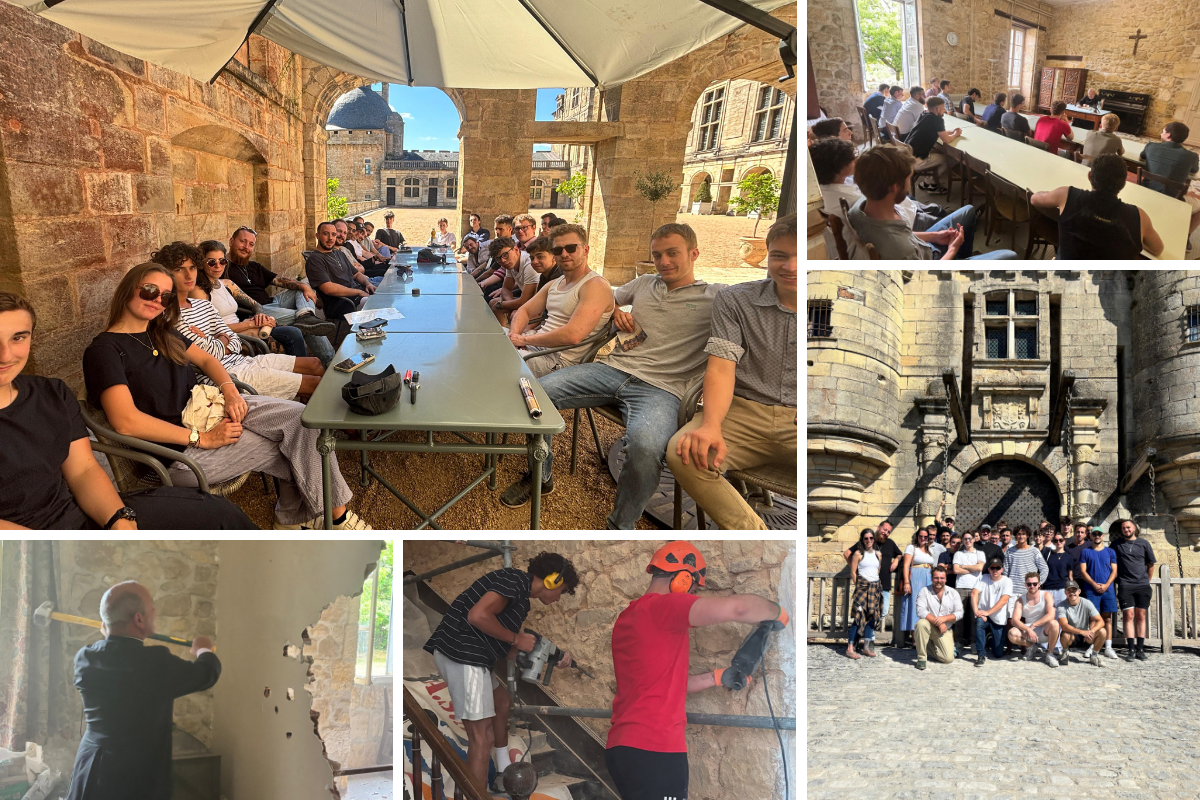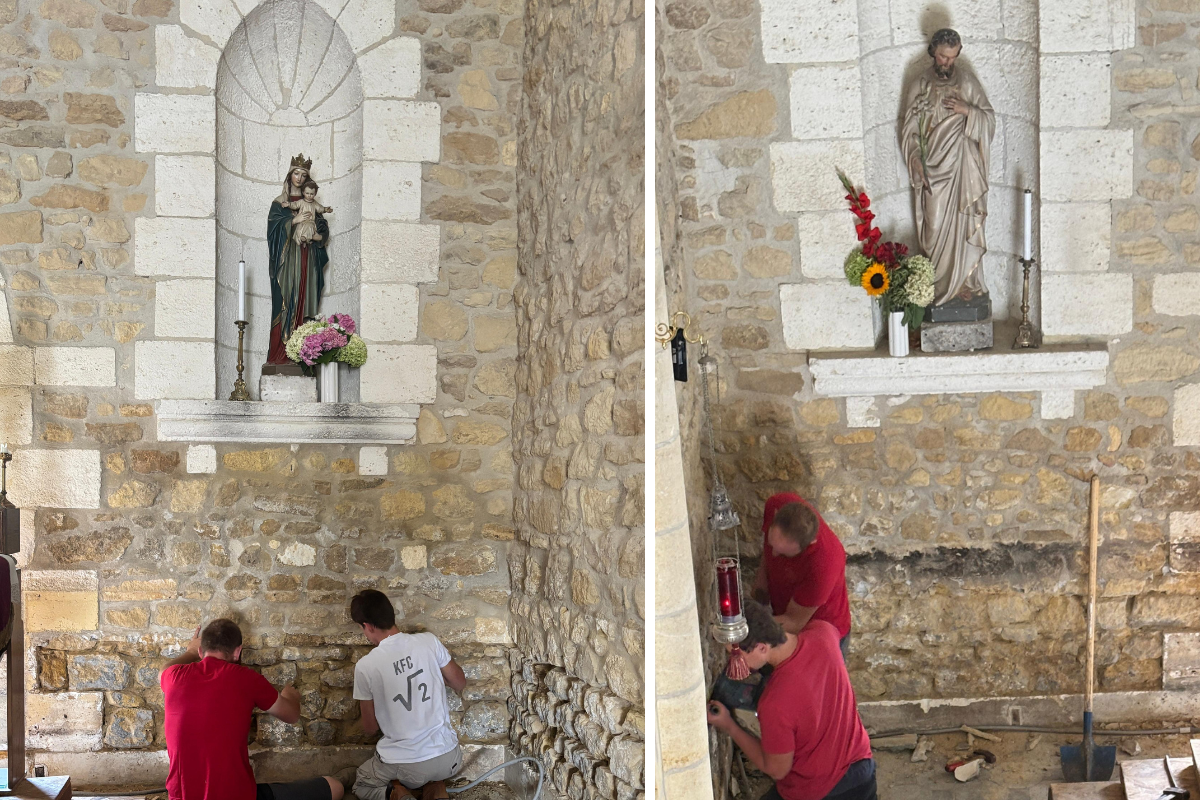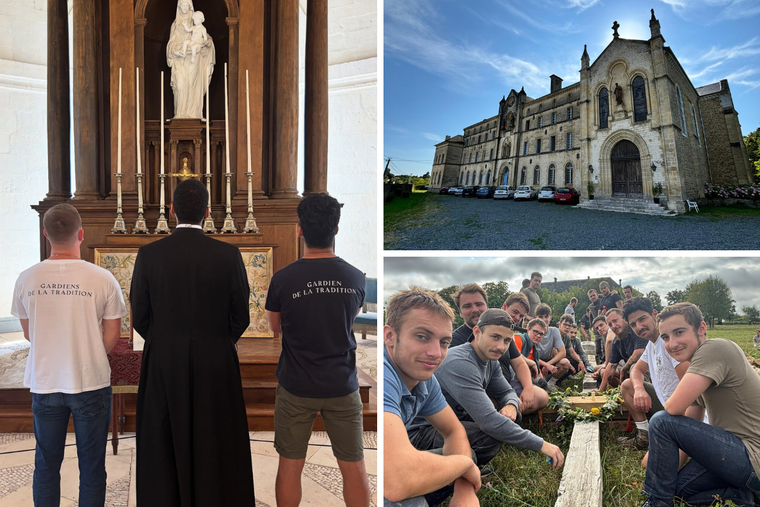THIVIERS, France — A 19th-century convent, long forgotten and in disrepair, is now being restored thanks to the efforts of a group of young people and the dedication of a Catholic priest.
For the fourth year in a row, Father Mathieu Raffray of the Institute of the Good Shepherd has been reaching out to French youth through social media, inviting them to join him in “rebuilding Christian France.”
In recent years, the Institute of the Good Shepherd has undertaken various restoration projects, including a seminary, as well as other Catholic structures near Chartres and Mont-Saint-Michel. Father Raffray has been particularly focused on engaging young people in these efforts.
This year’s project aims to turn the former convent into a spiritual retreat center.
Renovating Buildings, Restoring Souls
“It’s a great way to bring together several aspects,” Father Raffray explained to the Register, “being useful while offering young people, who are often very isolated in their daily lives, the chance to meet other Catholic youth, to encounter priests, to ask questions, to discover the traditional Mass (TLM), all while helping to preserve heritage.”
This year, 28 young men and women — whom Father Raffray connected with through social media, particularly his large Instagram platform, followed by both believers and nonbelievers in France — took part in the initiative July 13-20.
Though most were Catholic, this year’s group included atheists, baptized but nonpracticing, and newly baptized participants. The mix led to rich discussions and shared moments of prayer where many drew inspiration from those with deeper faith.
“Many young French people want to discover the Catholic faith and are led to ask questions about it through history, heritage and culture,” Father Raffray said.
Applauding “various initiatives that have emerged for the care of our heritage” — such as SOS Calvaires and Rénouve Une Statue, two French organizations aimed at restoring wayside crucifixes and statues across the country — Father Raffray noted that Christianity, because “it emphasizes that we are both body and soul,” naturally embraces such efforts.
Noting how these are particularly popular among young people, Father Raffray explained that their appeal lies in the fact that they offer an “exterior — sometimes very physically demanding — manifestation of spiritual convictions,” which, in turn, allows for “a deeper interior transformation.”
“It’s about restoring physical buildings, but ultimately, what interests me is the restoration of souls,” Father Raffray explained. “And I truly believe that all these young people, when they finish the camp, feel that they have grown, learned something, and been spiritually restored.”
 The young people carry and reinstall the cross on the grounds.(Photo: Courtesy of the Institute of the Good Shepherd)
The young people carry and reinstall the cross on the grounds.(Photo: Courtesy of the Institute of the Good Shepherd)
Building the Kingdom of God on Earth
Clément Gomes, 24, from Corbeil-Essonnes, France, took part for the second year in a row, after first connecting with Father Raffray through Instagram.
“I understood that there would be renovations, and I thought, ‘It could be good to give a bit of physical dimension to the spiritual side,’” Gomes explained to the Register, “like a pilgrimage, in the sense that you go through some physical discomfort, almost like penance, to contribute to something greater.”
“It may sound ridiculous — we just spent a week renovating a few things — but actually, it’s huge. We’re adding our stone to the building of God’s ministry on earth and contributing to the kingdom of heaven, here below, through our small works.”
Despite all of the physical work, Gomes, who converted to Catholicism two and a half years ago, said he experienced the entire week as a retreat, making an extra effort to wake up early for Mass and to pray the Rosary, adding, “Jesus keep surprising me and I keep rediscovering Christ very day.”
“For a week, we are outside the world. We truly live in community, among fellow Christians, feeling more alive than ever, burning with zeal.”
In addition to the fascinating conversations among them, the discovery of the traditional Latin Mass celebrated by Father Raffray every morning was particularly moving. “It is very spiritually enriching and like training,” Gomes said, “before returning to the world.”
 The group enjoys fellowship amid their labors. Even the priests assist with the demolition!(Photo: Courtesy of the Institute of the Good Shepherd)
The group enjoys fellowship amid their labors. Even the priests assist with the demolition!(Photo: Courtesy of the Institute of the Good Shepherd)
Duty Towards Their Heritage
Maxence Noël-Foubet, 17, from a city near Lille in northern France, likewise discovered the Latin Mass through Father Raffray. Thanks to social media, the priest helped guide him to a parish that offered the Latin Mass and encouraged him to attend.
For Noël-Foubet, the week was full of attentive learning from the priests and seminarians of the Institute of the Good Shepherd. “We could ask them questions at any time,” he told the Register. “They always knew how to answer us, and they could talk to us for hours, at the table or after Mass, about any topic.”
Still, Noël-Foubet stressed, “the camp was centered around the worksite” and the restoration of the convent.
“We were divided into work groups,” he explained. “Some took care of the interior; my group was in charge of the staircase. Others worked on the trees outside, and so on. We also organized ourselves for meals, dishes and the rest.”
“I think it is precisely the union between the spiritual and, at the same time, the duty we have toward our heritage, to preserve what our ancestors built, that speaks to young people more and more, because it’s a return to tradition,” he said.
“And it’s something concrete,” Noël-Foubet added. “It allows us to do, on our own scale, what our ancestors used to do. They built cathedrals; well, and we renovate convents, always with the aim of serving God.”
 Statues of Mary and St. Joseph are seen in the chapel under renovation.(Photo: Courtesy of the Institute of the Good Shepherd)
Statues of Mary and St. Joseph are seen in the chapel under renovation.(Photo: Courtesy of the Institute of the Good Shepherd)
Rebuilding Faith in Society
“To rebuild faith in souls,” Father Raffray explained, “we must also rebuild it in society and in our concrete daily lives.”
Explaining how there is a tangible, physical aspect to the spirituality of the Institute of the Good Shepherd, Father Raffray said: “Our charism is the Good Shepherd, the one who lays down his life for his sheep. It is the Eucharist, the sacrifice, the sacrificial offering.”
“But,” he added, “it is also the One who knows his sheep and whose sheep know him. So there is a tangible aspect to this manifestation of Christ’s love and of our attachment to the kingdom of Christ here on earth.”
He added that in the TLM, “the sacred is so tangibly expressed.”
Reflecting on the importance of expressing the faith through external actions among community, Father Raffray said, “Secularization seeks to confine religion to a private, individual choice that must not be expressed outwardly. But the doctrine of Christ the King, the doctrine of Christendom, is exactly the opposite: Someone who is Christian must be so inwardly, yes, but it must also be expressed outwardly, in their attitude, their intentions, their family life, their daily life, their professional life and their social life.”
In fact, Father Raffray argued, “it is a very fundamental idea in the Catholic faith that the Church is built with living stones. We too must build with those living stones.”
‘Radiant, Breathing, Alive’ Faith
“Young people want to be useful,” Gomes observed. “They want to do concrete things. They want their faith to take shape through action; it’s quite simple.”
Reflecting on the entire camp and the many graces received throughout it, Gomes shared one moment that was particularly powerful for him: “On the last day, Sunday morning, we all went out into the field where the worksite was. An hour before Mass, we set up the wayside crucifix, and each person placed their stone at its foot.”
“It’s actually a representation of the Church itself,” Gomes emphasized. “We are the Church, and we make the crucifix stand, each with our own stone.”
Even the atheists and those struggling with faith, Gomes shared, placed their stones, each one with a “seeking heart.” While some may not believe in the existence of a Creator God, Gomes emphasized, “I think this camp — the fraternity, the love that flowed through it all, all the conversations we were able to have — has already planted a small seed.”
 The work is seen underway.(Photo: Courtesy of the Institute of the Good Shepherd)
The work is seen underway.(Photo: Courtesy of the Institute of the Good Shepherd)
“What stays with me is people’s conversion,” Gomes added. “People came out of the camp radiant, breathing, alive, and you think, ‘This isn’t normal.’ You work a regular job for a week somewhere else, and by the weekend, you’re wiped out; you just want to sleep. But these guys, they were glowing.”
Struggling to put the spiritual experience into words, Gomes added: “It was the realization that it’s not all lost. There are strong Christians out there — eager to give of themselves to others and to give themselves to God.”
